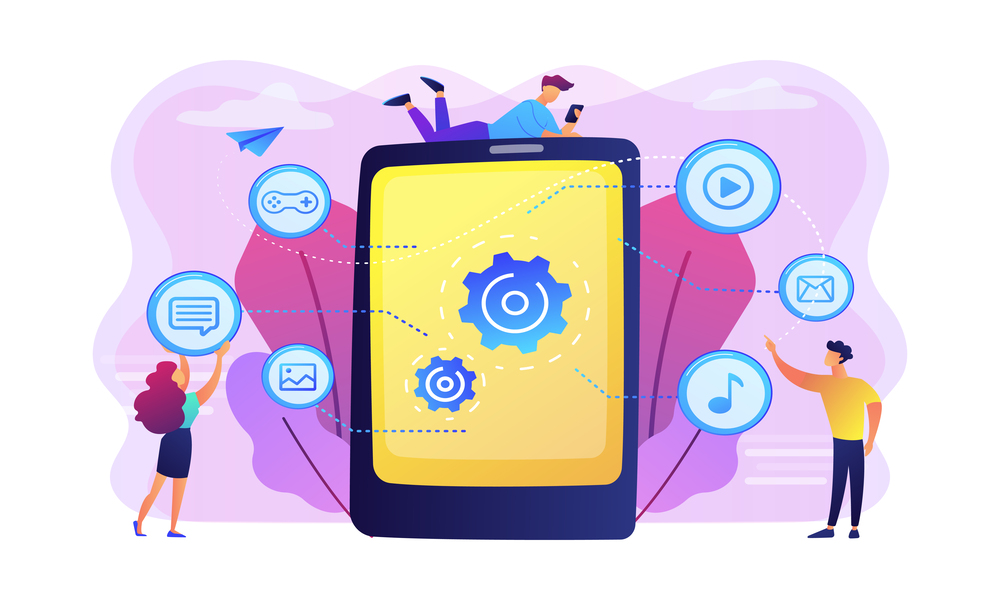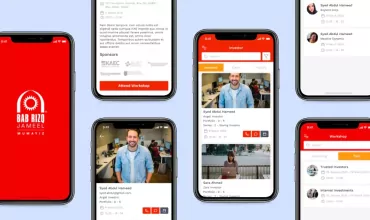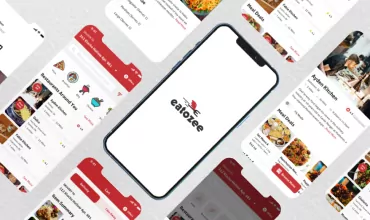Complete Step By Step Mobile App Development Process

Table of Contents
Whether you have a resource team in-house to develop a mobile application or hire a mobile app development company, the process of developing mobile applications remains the same. No matter the type of mobile app, whether it is a native Android or native iOS, or even if it is a hybrid app, this article will showcase the mobile app development process according to the industry’s best practices.
Hey.. hey…! Let’s not complicate things with the cost factor here. We know it is a primary concern to look out for any business owner before developing a mobile app. The mobile app development cost depends on several factors such as:
- Nature & type of a mobile app
- Post-development mobile app maintenance
- Mobile app testing via QA professionals
- Hiring a dedicated mobile app development team (Or in-house dev team)
Resources to hire to develop a mobile app
The process of hiring a dedicated software development team of course have benefits, especially for the businesses who are willing to save efforts, money, and time to recruit the right resources or setting the infrastructure. Let me share a quick tip for this situation to avail long-term benefits upon overall app quality and customer service.
It is preferred to hire a dedicated mobile development team from a software development company to a freelancer. The resources required to build an app are:
- Project Manager
- A UI/UX Designer
- Two programmers, at least
- Quality Assurance Engineer
Anyways, coming back to the core of this blog context, let us see the step-by-step process to develop a mobile application.
Step by Step Mobile App Development Process
1) The Project Discovery Process
The discovery phase is the initial process of the engagement including the business owners and the mobile app developers. The project discovery process starts with collaboration to shares ideas, discuss strategy, present a roadmap and non-functional UI/UX. Many software development companies do not give importance to this phase and skip it with a mentality to save time. Later on, this results in higher costs for the iterations and CR (Change Requests) and waste of time. Hence, for faster time to market, we at IndiaNIC hold significant importance to the project discovery process.
The process is a small workshop whose aim is to educate the clients to provide comprehensive and complete information through brainstorming sessions before the development.
2) UI/UX Prototypes/Wireframes Designing
Not all the client requirements are development-ready. Hence, to deliver a maximum impact, a design-first approach needs to be implemented before the development begins. This benefits for both the parties to be on the same page with a clear strategy so that the overall development can be cost-effective, faster, and lower in risk. The design process includes illustrations of information architecture with key modules in a logical hierarchy. Wireframes, the conceptual blocks that represent modules, flow, business process elements to deliver a non-functional digital experience before the actual development begins.
3) Development Cycle
Once the design prototype is finalized, the UI/UX design team and mobile app developers collaborate to start implementing the design elements in the app. The dev team writes the codes, compiles, develops, and integrates the modules, and runs the tests to check the functionality. The frameworks and tools are selected based on the platform the app needs to be developed. The mobile app development process is simple yet a complex one if nothing is figured out at the start.
4) Mobile Application Testing
Software testing and in this case, mobile app testing is an integral part of the mobile development process. We at IndiaNIC believe in one thing that is ‘Prevention over inspection’. It is better to do mobile app testing in terms of usability and functionality testing to identify the malfunctions and resolving them prior to the app launch. The QA services and process include strategic test planning, QA documentation, manual and automation testing, performance testing, and API testing. This process ensures flawless execution of the mobile app once it goes live to gain the trust of the users.
5) Launching a Mobile App
The mobile apps are launched over the platforms dominated by Apple and Google that covers 99% of the market share. Google’s Play Store and Apple’s App Store have a predefined process to apply for launching a mobile app. Normally this process is included in the package of the project. Only the registration charges are needed to bear. Play Store charges $25 one time, whereas App Store cost is $99/year.
6) App Marketing
This is the process to create various campaigns to increase engagement with the target audience and increase app downloads. App marketing is important because the techniques implemented in this help and increase overall mobile app visibility and push the app to the top. Many app marketing agencies prefer to implement pre-launch, launch, and post-launch marketing campaigns.
Why Choose IndiaNIC for Mobile App Development?
If you are looking to develop a custom mobile app, no matter if you are a startup, business, or an enterprise, your search ends here. Since 1997, IndiaNIC has been the best offshore mobile app development company to have catered to global clients. The mobile app dev team holds a wide spectrum of technical expertise and has years of experience in working with businesses of all kinds.
Our engagement models are client-friendly and the process to hire a dedicated team of developers is efficient and fast which allows to onboard a team in the shortest time. It is our standard practice to take proactive measures and that is why we have implemented a periodic review to inculcate a 360-degree view on every situation of every software development project.
Does that interest you to know more about how we do it? Let’s connect. Hire dedicated mobile app developers now from IndiaNIC with guaranteed project delivery, full transparency, and greater value for money!



